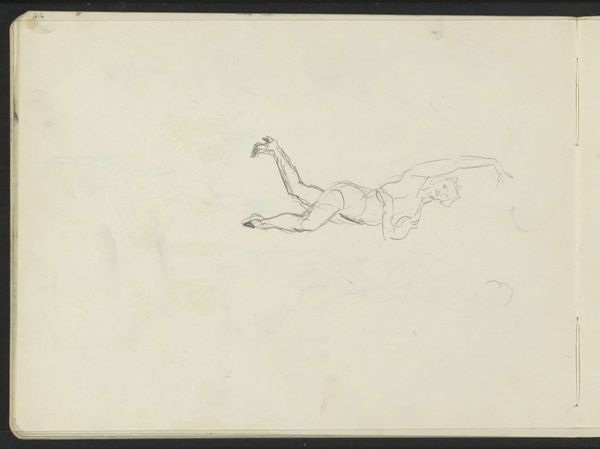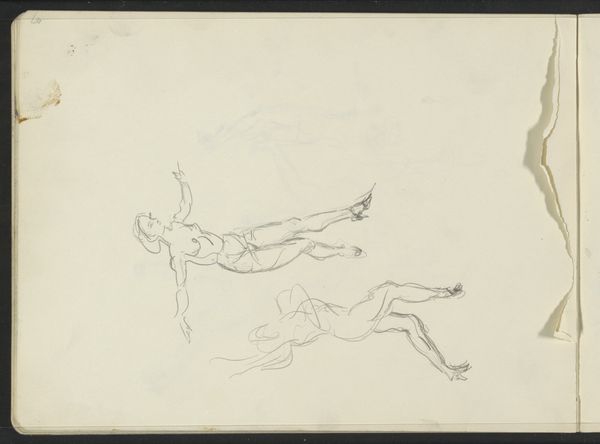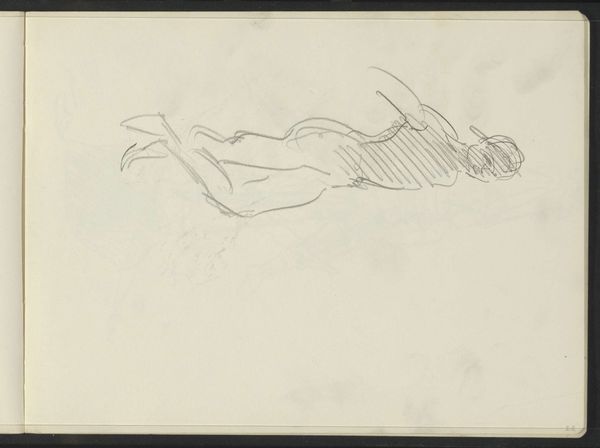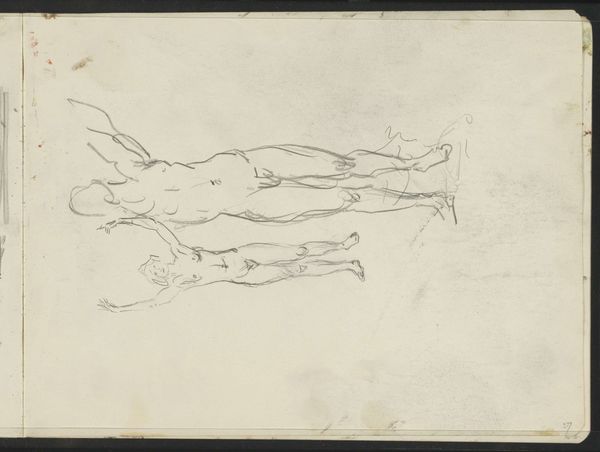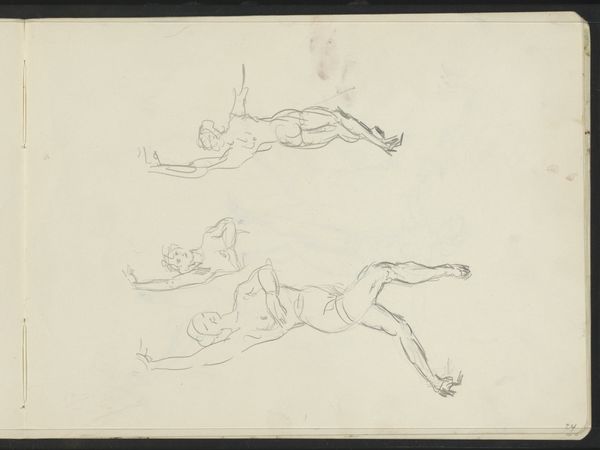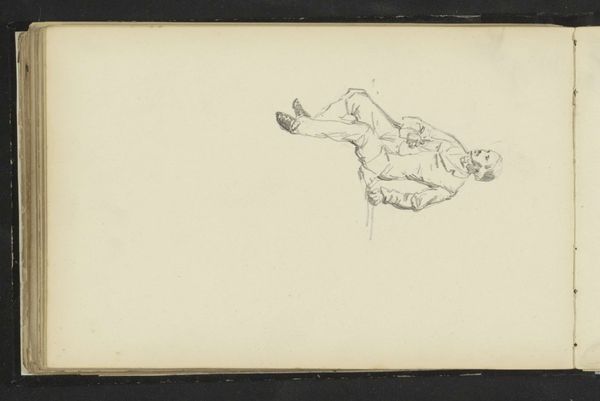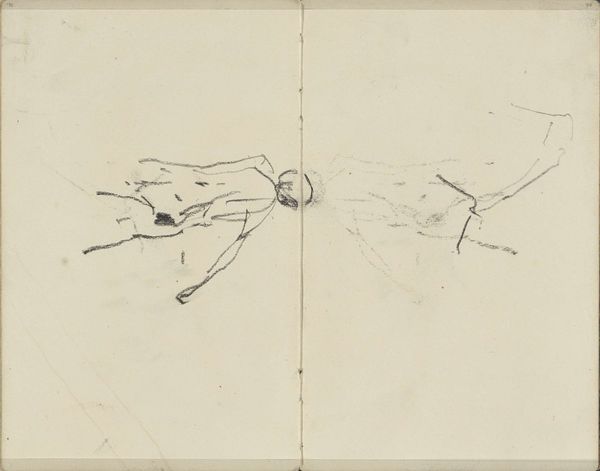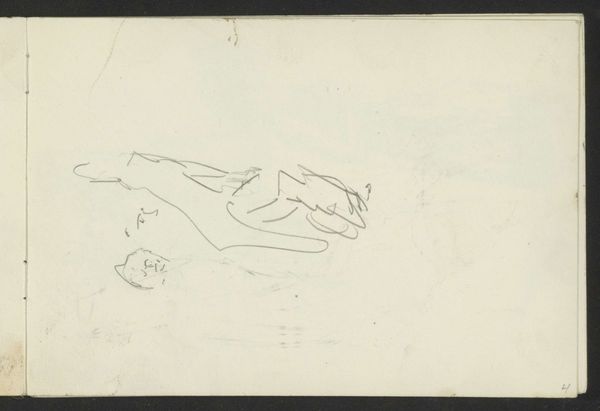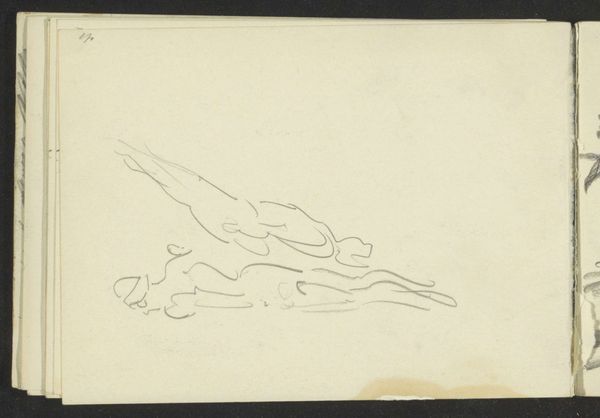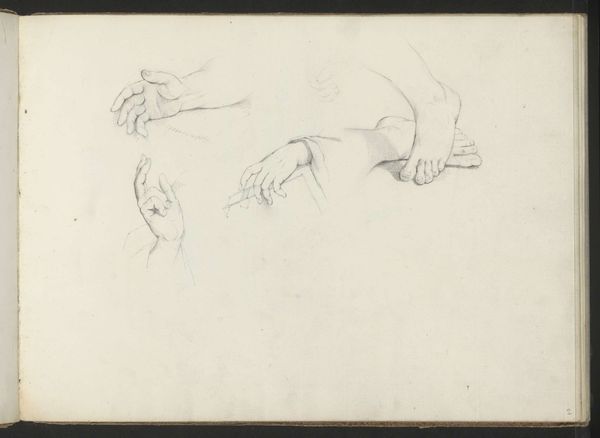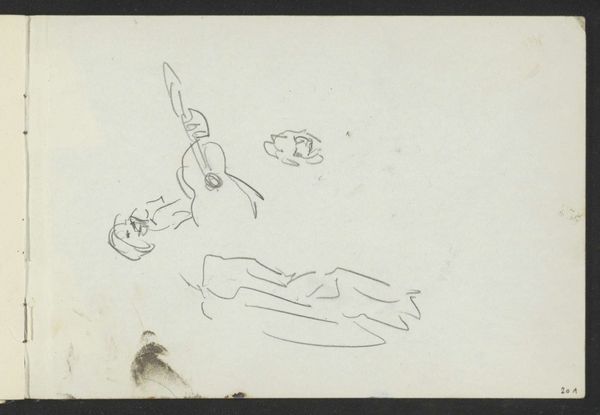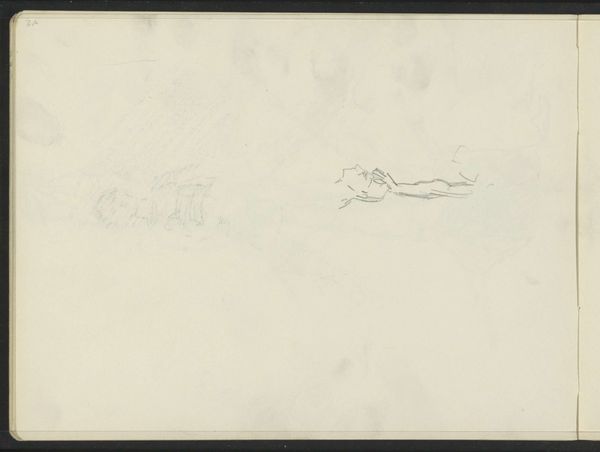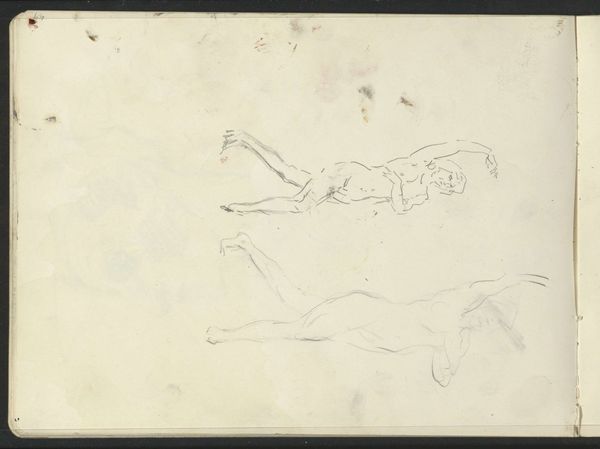
Copyright: Rijks Museum: Open Domain
Editor: Here we have Isaac Israels’s "Twee studies van vrouwelijk naakt, mogelijk dansend," created sometime between 1915 and 1925. It’s a sketch using pencil and ink on paper, and you can really see the artist's hand at work. What jumps out to me is the feeling of movement and how fleeting the gestures seem. What are your thoughts on it? Curator: Well, looking at this drawing through a materialist lens, I'm immediately drawn to the artist’s process. This wasn't meant for the salon; it's an intimate glimpse into Israels's studio practice. We see the artist working through ideas, not striving for a finished product. Consider the materials - the humble pencil and ink, the inexpensive paper. It suggests a democratic approach to art-making, making it accessible to many social strata, challenging the preciousness associated with high art. What can we learn about labour, about production, from its unfinished nature? Editor: That's fascinating. I hadn't really considered it as a statement about accessibility. So, you are less interested in the ‘dance’ that’s mentioned in the title and more in the act of *drawing* itself? Curator: Exactly! The bodies are simply studies, notations almost, subservient to understanding production in motion. I mean, do we even know for sure they are dancing? Consider that the 'dance' may only refer to Israels *hand* at work as it animates the figures across the page? We should really be paying attention to the labor and process involved, the artist’s interaction with the materials. Editor: That's a great point. So, by focusing on the materials and the process, we can almost reconstruct the artist's labor and challenge these assumptions? Curator: Precisely. Instead of focusing on aesthetics, we are revealing and emphasizing what art *is*. How the drawings were made speaks volumes beyond the represented subject. Editor: This definitely gives me a whole new way to approach these initial, incomplete, and somewhat personal sketches. Thanks so much!
Comments
No comments
Be the first to comment and join the conversation on the ultimate creative platform.
